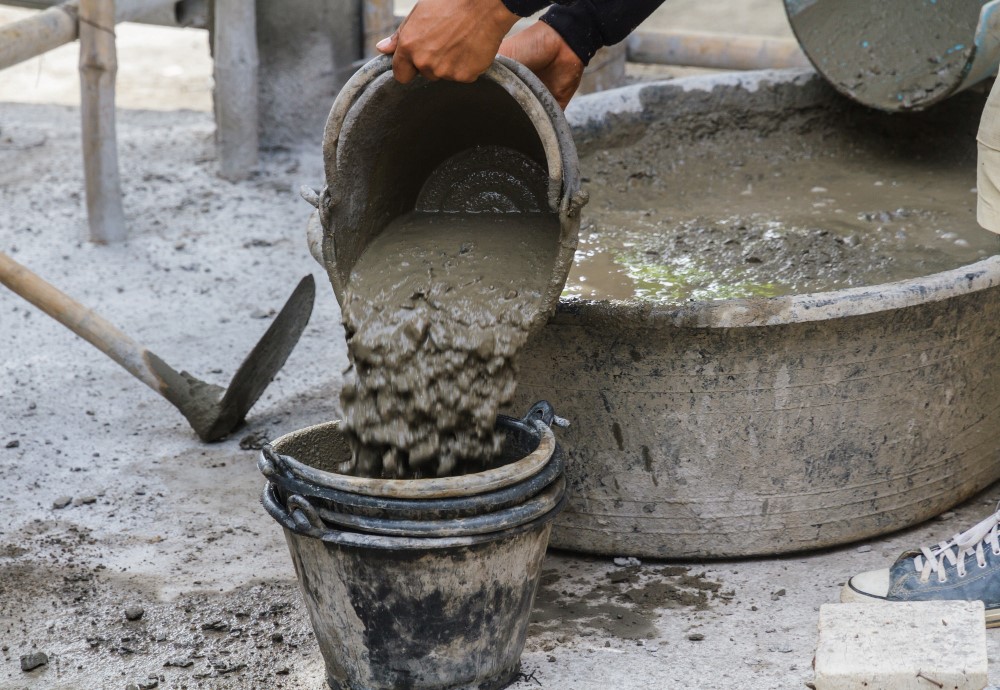The monsoon season arrives like a thunderous drumroll. While it brings a welcome respite from the scorching heat, it can wreak havoc on construction projects, especially those involving concrete and cement. Don’t worry! With some easy tricks, you can outsmart the showers and build strong anyway. This guide will turn you into a monsoon concrete master, so your project stays solid – rain or shine! Ready to mix things up? Let’s build!
Best Practices for Using Concrete and Cement in Monsoon Climates
Plan Ahead and Monitor Weather Forecasts
Before starting any concrete work during the monsoon, it’s crucial to plan meticulously and keep a close eye on weather forecasts. Avoid pouring concrete during heavy rainfall or when rain is imminent. Sudden downpours can wash away the cement paste and weaken the concrete’s structure.
Prepare the Site and Ensure Proper Drainage
Good drainage is essential to prevent water accumulation around the construction site. Clear drainage channels and ensure proper grading to direct water away from freshly poured concrete. Use sandbags or barriers to divert water flow if necessary.
Use Waterproofing Admixtures and Additives
Incorporate waterproofing admixtures into your concrete mix to enhance its resistance to water penetration. These additives form a barrier that reduces the absorption of water into the concrete, improving its durability and reducing the risk of cracking and spalling.
Cover Freshly Poured Concrete
Immediately cover freshly poured concrete with waterproof covers or plastic sheets to protect it from rain and moisture. Ensure the covers are securely anchored to prevent them from being blown away by wind.
How to Protect Concrete from Rain
To protect concrete from rain, always cover it with waterproof materials immediately after pouring. This prevents rainwater from affecting the curing process and compromising the strength of the concrete.
Can You Pour Concrete in Rain?
Pouring concrete in rain is generally not recommended as it can wash away the cement paste and weaken the structure. If unavoidable, use rapid-setting concrete mixes and ensure thorough protection from rainfall during and after pouring.
Pouring Concrete Before Rain
If rain is expected, plan to pour concrete well in advance of the rain. Monitor weather forecasts closely and adjust your schedule to avoid rainfall during the critical curing period.
Optimize Concrete Mix Design
Adjust the concrete mix design to accommodate monsoon conditions. Consider using additives that accelerate curing or improve water resistance. This ensures the concrete achieves desired strength despite rainy weather.
Maintain Ambient Conditions
Monitor and control ambient conditions such as temperature and humidity during concrete curing. Avoid extreme temperature fluctuations and excessive moisture, as these can affect the curing process and lead to poor concrete quality.
Apply Surface Treatments
After the concrete has cured, apply suitable surface treatments such as sealers or coatings to further enhance its waterproofing properties. These treatments provide an additional layer of protection against moisture ingress and help prolong the lifespan of the concrete structure.
Proper Drainage Systems
Incorporate effective drainage systems around construction sites and within concrete structures. Proper drainage prevents water accumulation, which can weaken foundations and affect the durability of concrete over time.
Curing in Controlled Environments
If possible, conduct concrete pouring and curing in controlled environments such as temporary shelters or enclosed areas. This protects the concrete from direct exposure to rain and allows for better control over curing conditions.
Regular Maintenance and Inspection
Perform regular inspections of concrete structures after the monsoon season to identify any signs of damage or deterioration. Prompt repairs and maintenance can prevent minor issues from escalating and ensure the longevity of the construction.
Partnering with a Construction Company: A Crucial Step
When addressing the complexities of concrete and cement usage in monsoon climates, seeking professional assistance from a reputable residential house construction company can make a significant difference.
A residential house constructioncompany brings expertise, resources, and experience to ensure that your project adheres to the highest standards of durability and quality even during challenging weather conditions.
Introducing Ghareka: Simplifying Home Construction for You
Ghareka is a residential house construction venture under the Shyam Steel group, dedicated to simplifying the home-building process. Recognizing that a home is a cherished asset meant to endure for generations, Ghareka offers comprehensive services to guide you through every stage of construction:
- Design and Development: Our team of experts assists in creating optimal house plans tailored to your needs and preferences.
- Plans and Approval: We manage the sanctioning processes, ensuring compliance with local regulations and smooth approvals.
- Procurement and Construction: Ghareka handles the procurement of all construction materials and oversees every aspect of building your home.
Our commitment to transparency and reliability is bolstered by our proprietary mobile application, providing you with real-time updates on every phase of your home-building journey. From initial designs to the final touches, Ghareka ensures that your dream home becomes a reality with efficiency and affordability.
Whether you’re facing the challenges of monsoon construction or planning for any other season, Ghareka stands as your trusted partner, dedicated to making home construction a straightforward and satisfying experience.
FAQs:
Can you pour concrete in the rain?
It’s best to avoid pouring concrete in heavy rain as it can weaken the curing process. Schedule pouring during dry periods or use weatherproof covers.
How can I protect concrete from rain during construction?
Use weatherproof covers immediately after pouring and apply surface treatments to repel water and maintain concrete integrity.
What are the risks of pouring concrete before rain?
Pouring before heavy rain can lead to surface damage and slow curing, weakening the concrete’s strength and durability.
How can a construction company help with monsoon concrete work?
Construction companies optimize scheduling, use protective measures, and ensure proper drainage to safeguard concrete during curing, mitigating risks and ensuring quality construction.

